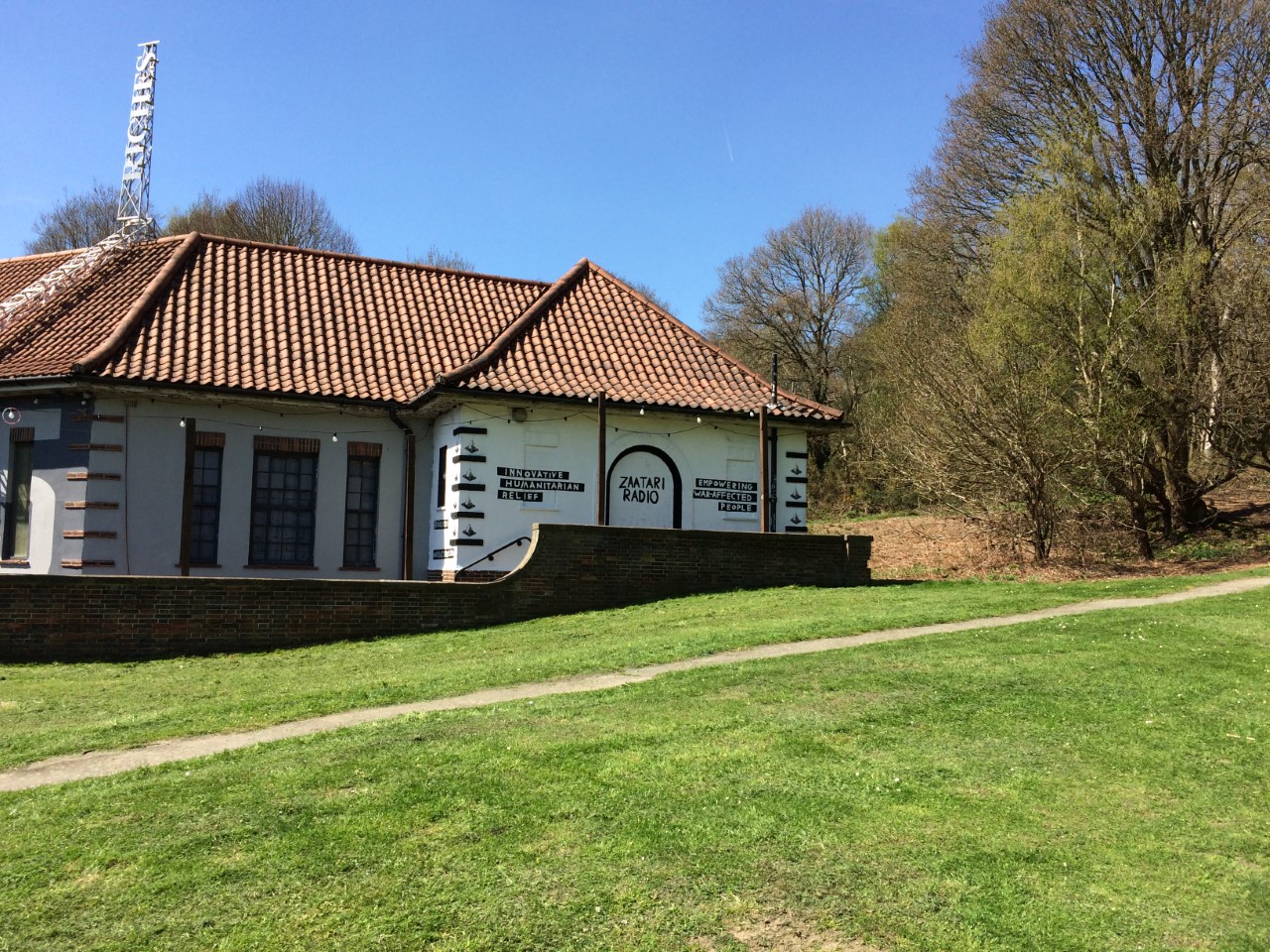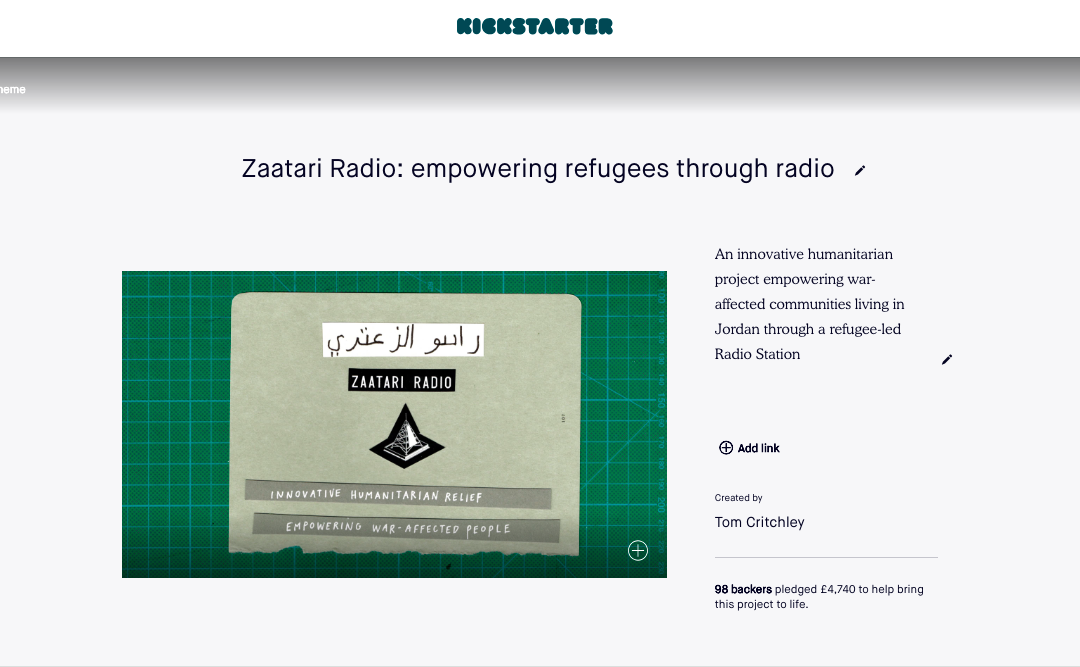In a previous blog post on creating a grassroots humanitarian project, I alluded to the idea that funding is not a barrier to innovation, but an opportunity to build a community around your project. Although raising the necessary funds to ensure your project is as successful as possible can be disheartening, this problem presents the prospect of expanding your project and those who follow it. As essential as it is to create a project that empowers the community it is meant to serve, it is just as crucial to developing a community of support around the project. Much like your project itself, the means to funding should be imaginative and innovative to not only ensure you raise enough funds but also catch the attention of those supporting your project to build your following even more. Through an innovative fundraising campaign, you may find that creating your own grassroots project is the start of a long journey of humanitarian work, and those who support your project will continue to do so along the way!
So, a charity bake sale then your project is good to go? Besides the large amount of chocolate brownies necessary to fund a grassroots humanitarian project, your fundraising campaign needs to be as meticulously planned as the implementation of the project itself. Maybe if your project is hosting community-cooking classes, then it is time to set the oven to gas mark four. But first, consider who you are directing your fundraising campaign at; those who identify most with your projects underlying themes and objectives are most likely to empathise with the project and support you along the way. Thus a targeted fundraising campaign is crucial. Furthermore, as innovative projects signal contemporary approaches to humanitarian work, as has more traditional forms of fundraising become obsolete. This presents new questions regarding raising money through crowdfunding: How do I run a successful online campaign? What platform should I use? How do I gain attention for the campaign? Lastly, it is crucial to consider what is beyond funding. Reaching your desired amount may seem like an end-goal, however, it is important to look past this to ensure your project is adequately financed and in good shape to be taken to further possibilities that may occur along the way.
Creating a community-based project
For those where radio played an important role in their life, it was straightforward to identify, and thus empathise, with the transformative role in which radio could play in the lives of people affected by war and conflict. Although this meant Zaatari Radio had a natural audience gaining traction for the project from the offset, hard work in targeting the project to these people was still necessary. Reaching out to market leaders and respected platforms within radio and electronic music provided the necessary traction to build a following to fund the project, as well as crediting Zaatari Radio as an organisation that represents the community that supports it. As suggested in my first blog, your project should be well defined with outlined objectives, making it clear who you are targeting your project at. Perhaps if it is a bike-based project you can contact the cycling community, or if its arts centred reach out to artistic communities who can identify with the key ethos of your project. Not only look to leading platforms within these fields- magazines, online content and large organisations –but also consider small, more local avenues that may be more willing to support a homegrown project. For Zaatari Radio, our local music venue The Tunbridge Wells Forum provided invaluable support to the project: hosting fundraisers, expanding our content reach, and even providing the space for a Zaatari Radio mural.
This support from our local music venue implies a crucial hallmark of a successful community-driven project: building a movement around a specific issue, fostering innovation across communities beyond your own initial project. Engaging with your following is a two-way street and leads to your project growing outwards past mere fundraising. Beyond sharing our project message, our community of followers have volunteered to organise fundraisers, donated mixes to our podcast series, and invited us to feature on their own radio shows. This movement built around a radio-based humanitarian response has supported a successful fundraising campaign, as well as ensured that the issues raised by our project have reached as many people as possible.
Crowdfunding: How to run a successful online campaign
Choosing to fund your project via an online crowdfunding platform opens up your project reach to the entire world; local support is important but you will find in using crowdfunding the community around your project will reach new heights. Zaatari Radio’s Kickstarter had backers from all corners of the world, and the decision to use crowdfunding meant we became a global grassroots project! Despite crowdfunding often being considered the start of innovation, in reality, a successful crowdfunding campaign is the result of meticulous planning and preparation. The moment you click go-live on your campaign, all the hard work should be already done, and the time period in which the campaign is running should be the least stressful part! The first question that will come to mind will be what platform to use? We went for Kickstarter: the credibility and reach of the website favoured our project approach, and although their ‘all or nothing’ funding appears to be a hindrance we found that it only encouraged people to support our work and help it reach its fundraising target. However, the Kickstarter ‘all or nothing’ policy means you should be conservative with your fundraising target: do not expect to raise all your necessary funds through Kickstarter, however, provide incentives for people to continue to back the project after you have reached your fundraising objective.
A successful campaign may appear as a spontaneous reaction to the project being backed, however, tireless planning meant that the funding goal was reached in plenty of time. Perhaps most importantly to the whole project is building a community of supporters around the project before the campaign is started. Although it is true that through a campaign you will reach out to new followers, the bulk of supporters will be those who already follow your work. Scheduled mailing list emails, social media updates, and innovative marketing strategies will ensure that when you go live with your campaign your followers will be itching to support your work monetarily. Kickstarter algorithms that ensure your project reaches as many people as possible favours projects that receive large percentages of their funding goal within the first 48 hours. Therefore this pre-established community of supporters is vital in reaching further avenues of support. Moreover, the timing of launching your campaign becomes important: to ensure you get as much funding within the first 48 hours make sure your project is launched at its most popular moment. For Zaatari Radio, this was after our first fundraiser. Not only did this raise over £750 pounds for the campaign, but also gained the project a lot of recognition during the week in which its Kickstarter was launched.
Crowdfunding campaigns also offer an opportunity to provide pledge rewards to those who back your project. These can incentivise people to back your campaign, as well as reach more potential supporters through merchandise. Those wearing your merchandise are representing the project, so rather than merely printing cheap t-shirts to generate as much profit as possible, we chose a local screen printer who used climate neutral and fair trade cotton to match our community ethos and ethical stance. However, remember that pledge rewards are not cheap! Factor in the cost of manufacturing these rewards and posting them into your fundraising objective. Otherwise, after this and the processing fees that your platform will take, you may be left with less fundraising then initially thought!

The content of your campaign should encompass as much as your project as possible: outline its objectives, its key features, its social proof, the project timeline, the breakdown of allocating funds and introduce the people behind the project. Although the campaign page should outline all this in detail, a video that offers all this information in an easily digestible manner can grab potential backers attention and help them visualise how your project could become a reality. Research suggests that Kickstarter campaigns with a video are 85% more likely to achieve their goal. Spend time planning and shooting an appropriate video and consider that this video will offer an insight into the people behind the project that backers may or may not fund! A recent UNHCR Article outlines the fact that “people are not only investing in projects, but the people implementing them.” A well-organised crowdfunding campaign is a perfect opportunity to introduce the people backers are entrusting to successfully carry out their humanitarian project, displaying all the necessary qualities for the project to be implemented as smoothly as possible.
Is the hardest part done?
You’ve run your successful crowdfunding campaign, and its easy sailing from here? Well…not necessarily. In receiving outside funding for your project you have committed to delivering on your promises outlined in your crowdfunding campaign. Within the campaign, you should have outlined a detailed project timeline and breakdown of where your funding will be going, which should be stuck to as closely as possible. You will need to follow through with delivering your pledge rewards and project objectives, making sure your project it as successful as possible.
Moreover, you have now created a community of supporters around your project, and you should promptly come to the realisation that this is just the beginning of your humanitarian work. Of course, you have your project to deliver on, but remember that enough people believe in you to deliver on these expectations to support you monetarily. This is quite the achievement and will lead to bigger and better things. Other organisations will soon reach out to you for support and collaborations, new projects will be offered to be undertaken, and soon enough your fundraising fiasco will become another stepping stone on your humanitarian journey!

Share with us your experiences
This blog post aims to detail guidelines on fundraising a grassroots humanitarian project, and we’d love to hear about your own experiences, lessons learned in crowdfunding, and additional tips on grassroots projects, including how this article has helped you along the way.
But the takeaway point to start is: this is just the beginning and an opportunity to start something truly great!
If you want to follow our journey at Zaatari Radio – stay tuned and discover more here:
- Website: https://www.radiozaatari.com/
- Instagram: https://www.instagram.com/radiozaatari/
- Twiter: https://twitter.com/radiozaatari
- Soundcloud: https://soundcloud.com/radiozaatari
We’re always looking for great stories, ideas, and opinions on innovations that are led by or create impact for refugees. If you have one to share with us send us an email at [email protected]
If you’d like to repost this article on your website, please see our reposting policy.

